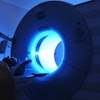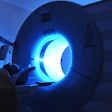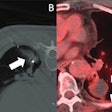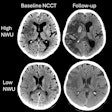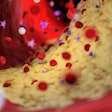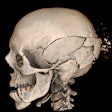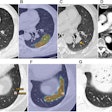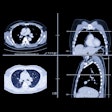The diagnostic algorithm of LI-RADS CT/MRI Nonradiation Treatment Response Assessment (TRA) version 2024 (v2024) bests the LI-RADS CT/MRI Core version 2018 (v2018) for detecting local recurrence of liver cancer after surgery, researchers have reported.
Why? Because it can identify recurrences earlier and at smaller sizes, wrote a team led by Sung-Hua Chiu, MD, of Stanford University. The group's results were published November 5 in the American Journal of Roentgenology.
"v2024 enables detection of postoperative [hepatocellular carcinoma] local recurrence at an earlier time and at a smaller size, potentially improving eligibility for timely salvage," the team explained.
The 2024 update to the LI-RADS TRA algorithm included a few key changes, including individual assessments of radiation-based and nonradiation-based therapies and a "single simplified imaging criterion -- mass-like enhancement in any phase -- to replace the prior three-feature assessment of enhancement," the group noted. The update also now allows the system's use for surgical margin assessment.
Chiu and colleagues conducted a study to compare the two liver cancer recurrence assessment tools that included 200 patients with surgically treated liver cancer who underwent at least one liver CT or MRI six months or more postoperatively. Two radiologists reviewed these exams, evaluating the surgical margin using both v2024 and v2018. The investigators defined local recurrence in the following manner for the two frameworks:
- v2024 as LR-Treatment Response Viable (that is, with mass-like enhancement at the margin, in any phase and of any size), and
- v2018 as LR-5 (most likely malignant), LR-M (probable nonhepatocellular carcinoma malignancy), or LR-TIV ("tumor in vein").
The team found that v2024 detected over time local recurrence in patients with surgically resected liver cancer after a median of 5.1 months and at a median size of 1.5 cm, while v2018 detected local recurrence after a median of 12 months and at a median size of 2.1 cm.
Since it identifies recurrence earlier and at potentially smaller lesion size, the updated algorithm has "important management implications," according to the researchers.
"Without the updated system, many patients with recurrence would require prolonged surveillance until additional major features accumulate or the observation grows to meet size criteria," they concluded. "By enabling earlier identification of recurrence … v2024 offers the opportunity for intervention earlier in the patient's disease course, when the recurrence is smaller."
The complete study can be found here.

